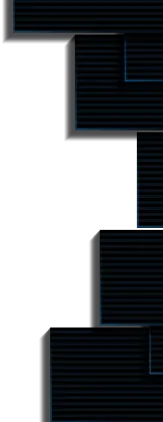DFX: A decentralized FX trading protocol
Author: Kaushal

Stablecoins are the backbone of today's cryptocurrency market. Their predictable and non-fluctuating nature makes them suitable for day-to-day exchanges and transfers between multiple exchanges. They are a more reliable form of currency for payments than other forms of cryptocurrency.
However, the current stablecoin market is saturated toward only a few assets, such as the US dollar. This creates a massive gap between foreign stablecoins and the crypto market.
DFX aims to become a bridge between foreign stablecoins and the crypto market. Before diving deep, let's ensure we are on the same page regarding stablecoin terminologies.
Important Terminologies
Let us start with the core of our today's article: stablecoin.
Stablecoins
A stablecoin is a cryptocurrency that is pegged to a stable reserve asset. The stable asset is primarily the US dollar or gold. Unlike other cryptocurrencies, a stablecoin's value is tied to the underlying asset's price, not supply and demand.
Stablecoins are designed to reduce the volatility relative to unpegged cryptocurrencies like Bitcoin. Users can also use it for investing or trading purposes. Users can transfer money internationally at cheap costs.
There are four types of stablecoins, fiat-backed, commodity-backed, cryptocurrency-backed, and algorithmic stablecoins. Out of these four, fiat-backed stablecoins are used widely today.
Fiat-backed stablecoins
As the name suggests, fiat-backed stablecoins refer to cryptocurrencies or digital assets that are pegged to fiat currency held by a traditional bank. These are the only true stablecoins that are backed by real-world currencies.
Fiat-backed stablecoins offer complete stability compared to other cryptocurrencies' volatility, with minimal price fluctuations. Similarly, they have an easy structure for anyone to understand since they are connected to fiat currency.
Foreign stablecoins
Stablecoins that are not denominated in US Dollars are foreign stablecoins. These stablecoins are pegged to fiat currencies other than the US dollar, such as European Euro, Japanese Yen, etc. CADC, EURS, and XSGD are some prime examples of DFX.
The US Dollar is the most dominant fiat currency in the stablecoin market. Hence, there is a huge opportunity for foreign stable coins to adopt more broadly. Global finance can not rely solely on USD-pegged stablecoins anymore.
We need a decentralized protocol where users can safely exchange stable coins pegged to various foreign currencies. This isn't only important but necessary considering today's market. The team behind DFX finance is working on the same problem statement.
Introducing: DFX
Decentralized Foreign Exchange protocol, or DFX, is an optimized protocol for trading fiat-backed stablecoins such as CADC, EURS, XSGD, and more.

DFX is an Ethereum-based decentralized exchange protocol that uses real-world FX price feeds to optimize its bonding curve for fiat-backed stablecoins.
DFX aims to form partnerships with non-USD stable coin issuers worldwide to help them launch their tokens into the market. It will link currency exchanges in a chain, allowing millions of users to get the best exchange rates possible.
You can earn yield safely or use the DFX platform and its contracts to provide true financial localization for your global business's customers.
The goal of DFX is to develop foundational infrastructure for the DeFi ecosystem. Let us understand what DFX Finance has to offer:
An exchange for stablecoins
The goal of DFX finance is to give financial power to everyone, regardless of their choice of fiat currency.

DFX is focusing on fiat-backed stablecoins on the Ethereum blockchain. This enables leveraging the existing DeFi ecosystem to bootstrap next-generation foreign exchange.
DFX will bring liquidity and volume to fiat-backed stablecoins everywhere. This is for all major fiat currencies around the globe.
Hyper-efficient Trades
The DFX bonding curve continually shifts to allow for the most efficient trades. This means you can get extremely close to spot prices while taking advantage of Ethereum's quick settlement finality.

This allows users to have minimal slippage and optimized capital while maximizing utility.
DFX's Automated Market Maker
DFX Finance has its own Automated Market Maker(AMM) precisely optimized for the forex use case. This new AMM is specifically designed for trading currency pairs with moderate volatility. It is meant to be a generalized AMM.
To integrate external FX price feeds into the pricing engine, the DFX AMM uses Oracle powered by ChainLInk. To create and optimize the price range, it back-tests its currency pairs using historical FX data, maximizing capital efficiency and minimizing slippage.
The oracle design is compelling. Although the oracle does not set the price, it does serve as a benchmark for the bonding curve. This will assist in automatically repositioning the ideal capital range along the bonding curve.
Governance
The DFX Protocol is ultimately driven by governance. The DFX Protocol's governance is what determines new features and possible future orientations. Everyone who owns a DFX Token is eligible to vote on proposals and participate in the governing process.
The DFX Governance process begins with a straightforward discussion and progresses via a proposal, a vote, and ultimately, full implementation. This procedure is intended to be simple, secure, open, and a means of advancing the DFX Protocol in the future.
The DFX token
DFX must develop into a fully decentralized, DAO-governed protocol to become a project that others are willing to build upon. No one wants to build critical products on top of a centralized protocol.
The DFX token is the governance token for the DFX protocol. DFX token owners can propose changes to the protocol and cast votes on protocol changes as a decentralized autonomous organization (DAO).
Tokens will be continuously given to all stakeholders, including founders and investors, with most of the tokens going to the community. One hundred million tokenomics would be available on the market. All of them will have been distributed by month 96.

These coins will be allocated to various token holders, such as liquidity providers, investors, founders, and developers. Out of which, over half of the token supply will be distributed to the community over 96 months. This ensures the community will have majority control of the protocol in the long run.
For example, suppose the community wants to see a Turkish Lira stablecoin be part of the DFX network. In that case, token holders can vote to use tokens to incentivize efforts and partnerships with entities in that region.
External Links
DFX is an Ethereum-based decentralized exchange protocol that works around foreign stablecoins. Here are their quick go-to links if you want to find out more about them:
Wrapping Up!
DFX Finance is a decentralized foreign exchange protocol optimized for trading fiat-backed foreign stablecoins like CADC, EURS, XSGD, etc. Users can safely earn yield or use the DFX platform and contracts to provide accurate financial localization for the customers of their global business.
Head over to their official website to know more.





Subscribe to receive Alpha!
Join 4.3k subscribers from renowned companies worldwide and get a weekly update in your inbox. Stay updated on the latest and finest projects and product updates.

